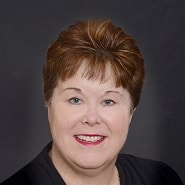
Cynthia Davis, Chief Health Information Officer, Methodist Healthcare
If there’s one thing Cynthia Davis wants attendees to understand about her presentation about the upcoming Fall Forum, it’s this: Sometimes, it’s not about technology.
It may seem like a strange thing to hear — particularly in reference to a session taking place at CHIME, a conference geared toward educating CIOs and other health IT leaders — but Davis is a firm believer that care coordination is about more than just tools.
Of course, technology provides the backbone for care coordination, and plays a key role in enabling care providers to engage with patients, but the lifeblood is, and will always be, communication. In her session, “Structure an Environment Around the Outcome You Want to Achieve,” Davis will outline the steps necessary to transform the continuum-wide delivery of care, using process and, yes, technology, to improve care coordination.
“We’re looking process, culture change, and technology, right down to the different silos of how care is delivered and care is managed, to see how we can improve patient engagement,” says Davis, who has been CHIO at Methodist Le Bonheur Healthcare since 2014.
It certainly hasn’t been an easy road at Methodist, which has a large uninsured population, as well as high rates of cancer, heart disease, and stroke in the community. Compounding the problem was the fact that outreach was happening in silos. “We realized that at any given time, four different groups were reaching out to patients to try to navigate their care,” says Davis. “We had inconsistent processes and we weren’t using data to the fullest extent.”
By breaking down barriers and asking the right questions — do we have the right structure in place, how do patients want to engage, and do we have consistent processes — her team was able to create a culturally sensitive and family-specific method of care navigation that resulted in improved patient satisfaction, annual cost savings of nearly $500,000, and a 10 percent reduction in unnecessary ED visits.
One of the key steps came in identifying specific goals. For example, reducing length of stay for patients with chronic heart failure and diabetes, which meant being able to more effectively target these individuals. “Once we began to take a look at social determinants, like whether patients were able to get medications filled, whether they had food in the house, and whether they had transportation, we were able to make some headway,” notes Davis. “We realized that unless we help to address some of those things, in partnership with the community, we weren’t going to see improvements.”
Building that partnership entailed creating patient and family councils and leveraging an infrastructure that had already been put in place through congregational health networks.
“It’s about knowing your community and understanding its needs,” say Davis, whose team has built a robust set of medical homes and embedded care navigators throughout the system. “We do phone calls to patients, we assign care navigators for those at high risk, and we do real-time alerting to ED physicians and primary care team if the patient presents in the ED.”
Methodist also sends targeted text messages to patients and families, and uses health coaches to work with those at highest risk for readmission.
The best part? “We didn’t go out and buy a big data warehouse,” notes Davis. “We’re leveraging our current Cerner infrastructure and tools. There’s no additional cost, and no licensing fees. We leverage what we already have, and we’ve been very successful at it.”
Davis’ session will take place Thursday, Nov. 2 at 10 a.m.


Share Your Thoughts
You must be logged in to post a comment.